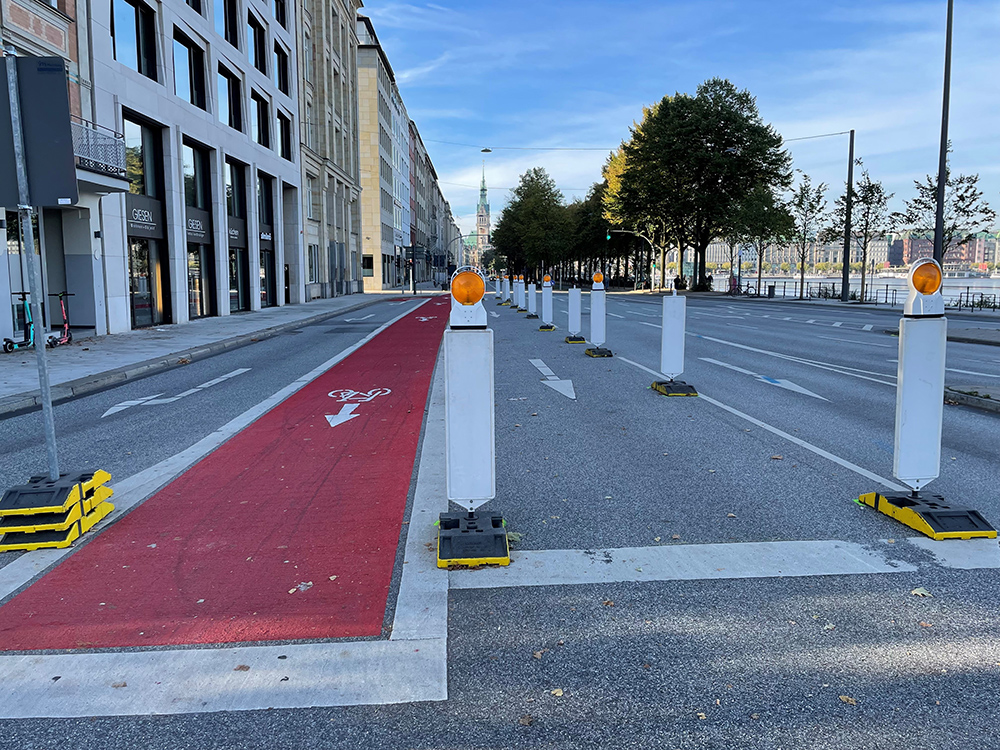
When it comes to the climate impact of transport, the numbers are stark: moving people and goods around the world generates around a quarter of annual global carbon emissions.
This figure – from the World Resources Institute – continues to grow and is why transport is one of the most urgent areas for decarbonisation. What’s more, transforming our transport systems to achieve net-zero mobility offers a huge opportunity for positive global change in cities and energy systems, such as by decreasing pollution.
Discussions around transport at Cop26 largely focused on the transition to zero-emission vehicles (ZEVs), with plans to address priorities including charging infrastructure, standards and regulations. The desire to transition to zero-emission HGVs and ZEVs is a truly global phenomenon.
Other important areas of decarbonisation were also discussed, noting that future sustainable road transport needs wider system transformation, including support for active travel, public and shared transport, and addressing the impacts from vehicle production, use and disposal.
But as the dust settles in Glasgow – and international commitments begin to turn into real-world action – many industry-watchers will be looking for an increased emphasis on means of decarbonisation beyond ZEVs.
The good news is the solutions we need to accelerate carbon-free transport are known, available and ready to be deployed. Governments, businesses and transport users can achieve rapid decarbonisation at scale, provided they work closely together. But to be successful, all parties must approach mobility with a new, more holistic approach.
At Arup, we have been considering a number of approaches in developing low- and zero-carbon transport systems. We understand there is no one-size-fits-all approach: each place faces its own unique challenges – something brought home to us all by hearing first-hand the impact of climate change on countries around the world at Cop26.
Arup is working with Cardiff Council to help it double the amount of cycle trips made within the city by 2030, as part of its goal of making walking or cycling the most popular modes of transport across the Welsh capital.

Technology is already driving radical changes in transport and we can encourage changes in behaviours and more sustainable travel to increase the pace of decarbonisation. The UK government’s recently published Transport Decarbonisation Plan sets out the range of actions needed to decarbonise the country’s transport system by 2050.
It recognises that technology can have profound implications for users and businesses, from digital connectivity, artificial intelligence, automation, and data innovation, to help us better understand people’s different needs and preferences – including motivations for, and barriers to, using these technologies.
The ITS community does, of course, have a significant role to play in the transition to zero-emission vehicles. But we can offer so much more across many areas of the transport system to achieve rapid decarbonisation. To this end, Arup has identified eight ways in which ITS professionals can support decarbonisation across the transport sector.
1. Support cultural shift
Intelligent mobility includes numerous tools which make behaviour change – and, in time, cultural shift – possible. Easier, cheaper, flexible and faster modes of transportation are crucial to move away from a deeply-entrenched reliance on cars. Intelligent mobility provides the type of digital infrastructure needed to influence travellers’ decision-making to favour more sustainable modes, including real-time travel information, e-ticketing, trip planning, and enhancing demand-responsive transportation, public transit and micromobility.
2. Deploy ITS to increase attractiveness of active mobility
Technology and services can play an important role in increasing the uptake of active mobility by improving safety, accessibility, and convenience. ITS can be deployed in several ways, including monitoring traffic to inform planning and routes, providing wayfinding apps or kiosks, managing traffic to prioritise active travellers, and using 5G to enable data exchange b etween smartphones and intelligent mobility infrastructure such as micromobility docking stations.
3.Embrace Mobility as a Service technology
Through an integrated digital platform that includes e-ticketing, dynamic trip planning, and live tracking, MaaS enables travellers to change their travel behaviour by matching their transportation mode to their trip type, rightsizing their trip based on their specific need (time, cost, route, etc). Such technology has implications network-wide by leveraging unused capacity and re-purposing it, providing efficiencies for both the individual and the system. In the last century, travellers were stuck with the mode they originally selected, most often a car. With public transportation at its heart, a 21st-century MaaS system reveals the benefits of multimodal journeys using active, shared and demand-responsive transportation, ultimately getting people out of their cars.
4. Accelerate the adoption of ZEVs
Achieving net zero by 2050 means ZEVs must be adopted faster. A Northwestern University study found that if electric vehicles replaced 25% of combustion-engine cars currently on the road, the US alone would save approximately $17 billion annually by avoiding the harm from climate change and air pollution. Scaled globally and across all motorised transport, ZEVs have the potential to shift the trajectory on climate change if supported by renewable energy advancements and several market and government interventions.
5. Convert commercial and public fleets to ZEVs
Transit networks and operators are buying buses and trains which will come online 10-15 years from now. However, the time to start investing in electric transit options is now: not only to signal that demand exists, but to ensure the fleets of the future are not reliant on the outdated and polluting technology of the past. China serves as an important proof point for what’s possible: it has more than 400,000 electric buses – about 99% of the world’s total – because a decade ago it began subsidising the electrification of public transport. By contrast the US only has a few hundred electric buses.
6. Ensure equitable access to ZEV charging facilities
Charging facilities must be widely available and equitably distributed across the network to ensure everyone can reap the benefits of ZEVs. Arup worked with the LA Cleantech Incubator to develop a standard framework for equitable and robust ZEV infrastructure deployment, highlighting the need for inter-agency collaboration and availability of renewable energy sources. Ageing electric grids are also a major barrier, but recent intelligent mobility advances are modernising grids through cutting-edge controls which work together to deliver electricity more efficiently. Smart charging from renewable sources, meanwhile, ensures charging time responds to the amount of power available through the grid.
7. Incorporate demand-responsive transportation into the network
The availability of demand-responsive transportation, specifically minibuses (aka jitneys) and transportation network companies, holds tremendous promise for filling gaps in transportation networks globally. Taken alone, demand-responsive transportation is expensive and transports fewer travellers than other forms of public transportation. The potential of demand-responsive transportation to contribute to net-zero goals is unlocked when it complements other forms of mass transit. It can provide critical first- and last-mile connections that otherwise pose barriers to mode shift, feeding travellers into sustainable modes like rail or bus and bringing down the externalised cost of transit trips network-wide.
8. Mandate autonomous vehicles to be zero-emission
Autonomous vehicles (AVs) present the most dramatic change to transportation since Henry Ford made cars affordable for the masses. This looming disruption in the intelligent mobility landscape presents a huge opportunity for policymakers to change course on climate change by mandating that AVs are zero-emission. The conventional wisdom is that AVs won’t be privately owned – at least initially – and will instead function as shared mobility. Without such a mandate, AVs could be environmentally catastrophic as they drive empty passenger miles while passenger-less, through increased demand for road capacity which causes congestion and increased emissions; and if they are charged by non-renewable energy.
 Clearly, there is no silver bullet in decarbonising the transport system, but post-Cop26, ITS should be at the heart of efforts to ensure the industry plays its part in meeting ambitious goals to tackle the climate crisis.
Clearly, there is no silver bullet in decarbonising the transport system, but post-Cop26, ITS should be at the heart of efforts to ensure the industry plays its part in meeting ambitious goals to tackle the climate crisis.
ABOUT THE AUTHOR:
Tim Gammons is director of intelligent mobility at Arup





